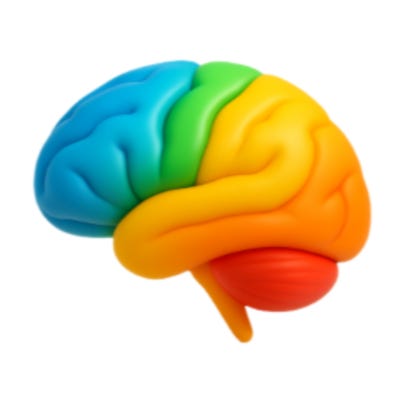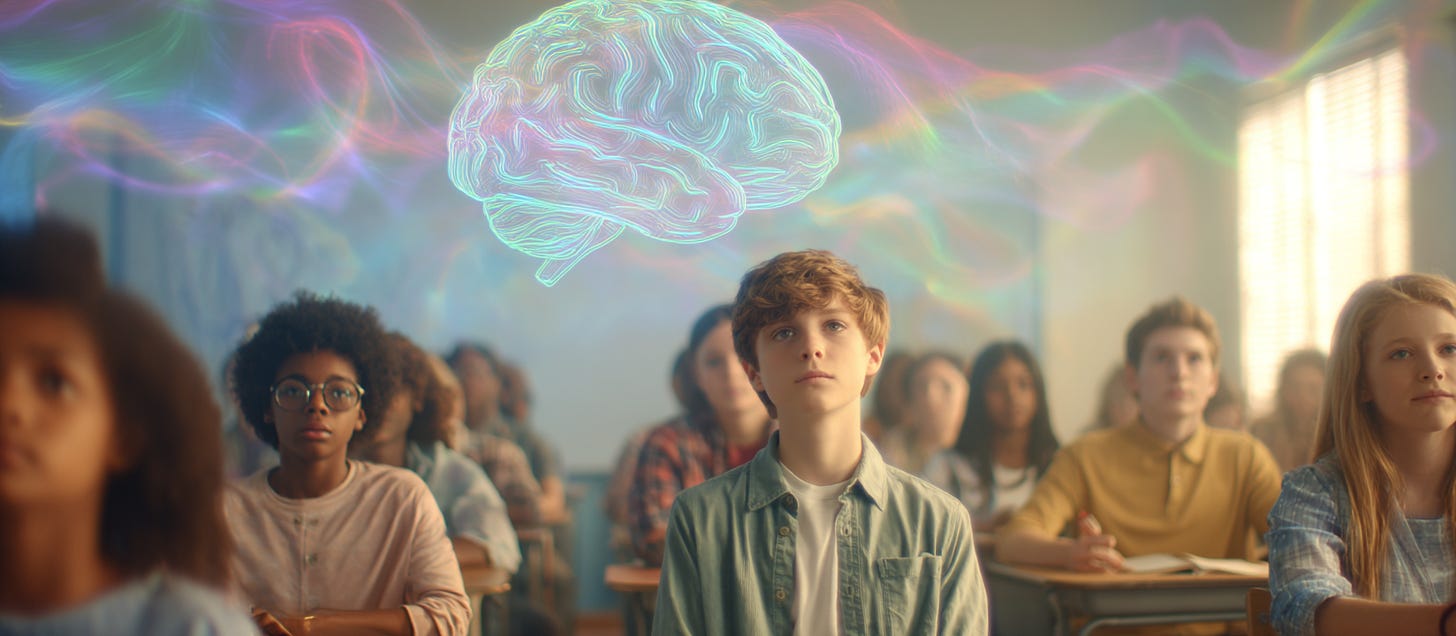A Student’s Brain in the Authoritarian, Detached, and Inconsistent Classrooms
From the student's point of view
The culture and learning environment of every classroom reflects the teacher’s management style. Whether they realize it or not, the teacher sets the tone, and students respond accordingly.
To explain what is happening inside my brain, I use the BrainZone Model (BZM). This framework translates neuroscience into applicable student and teacher-language, explaining, for example, why my brain gets stuck in stress and how that feels; or why my brain is primed for learning.
The three teaching styles we will look at today all revolve around the limbic system. This powerful network is not the part of the brain that solves problems or builds new knowledge, but it plays a crucial role in how students feel, react, and remember. The limbic system acts as the classroom’s emotional rudder, guiding motivation and shaping both behavior and learning.
Quick Refresher: The 5 BrainZones
Blue is mind-wandering, where creativity, imagination, and relaxation thrive.
Green is the external mind, focused on tasks and decisions. It activates the Central Executive Network to manage the outside world.
Yellow is the internal “mind’s eye,” where the Default Mode Network handles inner thoughts and conversations.
Orange is the reactive mind, fueled by energy and instinct. The amygdala fires quickly, pushing action before thought. Excitement, competition, or stress can all trigger this state.
Red is the survival mind, where panic takes over. The amygdala signals danger, and the brain shifts into fight, flight, or freeze. Protection becomes more important than anything.

Why It Matters for Teaching
The social brain networks are responsible for learning (Green & Yellow).
When my amygdala signals stress, I shift to the Orange Zone, narrowing my focus to internal alarms. The stronger and longer the stress, the more likely my prefrontal cortex will go offline.
When students do not feel safe because of harsh discipline, emotional distance, or inconsistent rules, the amygdala dominates and learning shuts down.
A strong sense of safety is widely recognized as the foundation for effective learning. Without it, achievement, engagement, and motivation all decline.
The Authoritarian Classroom: A Place of Pressure
Before the bell even rings, a knot forms in my stomach. Last night's assignment isn't done, and my amygdala is already in full alarm mode. When the teacher walks in, stiff and stern with his arms crossed, my worry skyrockets. His voice is a sharp warning, cutting through the morning air. “Hopefully everyone has their homework done or…” I don’t hear the rest. My brain momentarily shifts into the Red Zone, freezing me in place as my prefrontal cortex shuts down, making it impossible to process a single word he’s saying. In that moment, all I felt was fear.
Then, a classmate rushes in a few seconds late. Mr. A’s anger pivots to this new target, and his sharp words echo through the room. “I tolerate no tardies in my class, at all. Go get a pass.” My classmate’s face falls as the teacher simply stares him down. The whole class seems paralyzed, but the distraction gives me a moment to breathe. I take a few deep breaths to calm the frantic circuit of my mind, and eventually my thinking brain reengages. My prefrontal cortex comes back online, and I remember my unfinished homework. A new wave of tension washes over me, but my brain latches onto my plan to get it done. Every day in this class feels like a struggle. My brain stays on high alert, prioritizing survival over learning.
The Detached Classroom: A Place of Disconnection
The first few weeks have melted into a quiet blur. This teacher may not even know my name. A low-grade loneliness buzzes in my limbic system, leaving me directionless, like a ship at sea. She greets us politely, but it feels like routine, not a relationship. When she dives straight into the lesson with her eyes fixed on the slides, the learning environment turns cold.
After about ten minutes, she tells us to work on our own for the rest of the time, retreating to her desk. If anyone asks a question, she answers quickly, with a look of annoyance and no eye contact. Without connection, my brain slips into default mode, unfocused and distracted, drifting between the assignment and thoughts of what I will do after school. I can process what I read, but I am unmotivated and would rather be daydreaming. This classroom does not hurt me, but it does not inspire me either. It is quiet here, almost too quiet, and my working memory holds on to the content only briefly. Without engagement, nothing sticks in my long-term memory. My brain is on autopilot, doing just enough to get by.
The Inconsistent Classroom: A Place of Instability
This class is the most unpredictable, a constant guessing game from one day to the next. My amygdala is on high alert, always bracing for the next surprise because the rules keep shifting. Sometimes she collects homework for a grade, other days it's not even mentioned. Some days we can get up and talk with friends at the end of class, and others we are yelled at for it. This lack of predictable routines erodes my sense of safety and prevents my prefrontal cortex, which is responsible for focus and learning, from ever becoming fully engaged.
She also plays favorites, creating an undercurrent of tension that makes it difficult to relax. For example, this morning, she let one student go to the restroom but flatly told another, "No." A sudden hush fell over the class; everyone knows what might happen next. My limbic system stays on guard, so my brain spends more energy scanning for trouble than processing new information. These constant altercations are the worst. As the tension and anger linger throughout the silent room, everyone breathes a sigh of relief when the bell rings. In this classroom, my brain cannot genuinely engage in learning because the rules of the game are always changing.
Strategy Connections
Authoritarian – Tension Toss
Sometimes students need a physical way to reset. Tension Toss lets them symbolically “throw away” stress and regain focus. By pairing movement with intentional release, this activity calms the amygdala and helps the prefrontal cortex come back online.
Full Strategy Link Tension Toss
Detached – Story Spin
A detached classroom can feel quiet but disconnected. Story Spin reactivates social energy by having students build a story together, one twist at a time. The activity lights up the prefrontal cortex through improvisation while strengthening collaboration, creativity, and peer connection.
Full Strategy Link: Story Spin
Inconsistent – Weekly Success Celebrations
Inconsistency erodes trust. Weekly Success Celebrations restore predictability by recognizing effort, growth, and positive choices on a regular schedule. Students anticipate recognition, which reduces stress and builds belonging, keeping the amygdala calm and the social brain engaged.
Weekly Success Celebrations
A Final Truth for Every Educator
Classroom management does more than set routines. It shapes the networks in a student’s brain. In authoritarian classrooms, fear dominates. In detached classrooms, students drift without connection. In inconsistent classrooms, unpredictability fuels stress. In all three, safety is compromised, and learning shuts down.
When teachers build safety through consistency and connection, the amygdala quiets and the prefrontal cortex comes online. Curiosity, focus, and creativity follow.
Every student walks in with the same silent question: Am I safe here? The answer is written in the tone, choices, and routines of the teacher. When the answer is yes, students thrive.
Four Related Articles
Part 1: The Impact Teaching Style has on Classroom Management
Part 1: A Student's Brain in the Supportive and Permissive Classroom
✨Part 2: How Teacher–Student Relationships Define Your Classroom Management Style
👋🏼 Thanks for reading
Debbie




